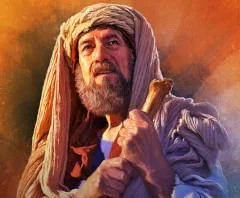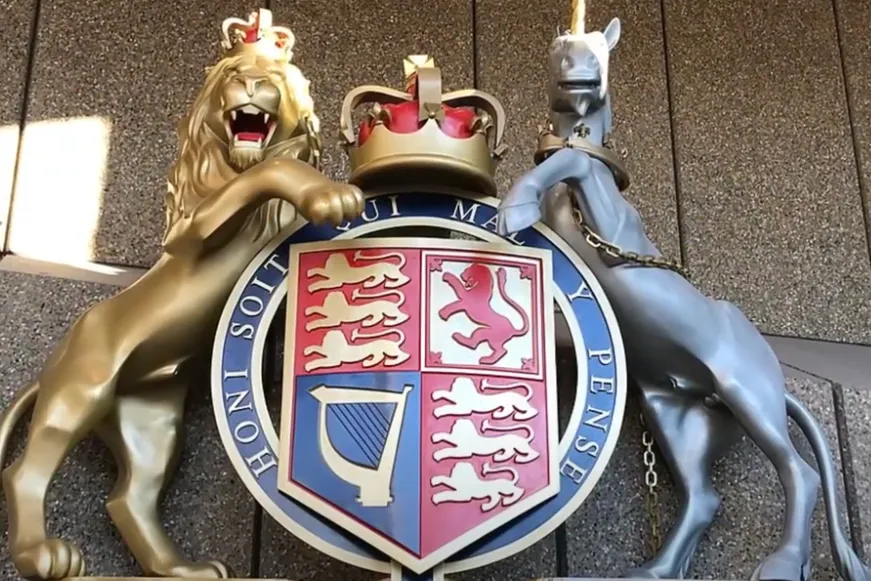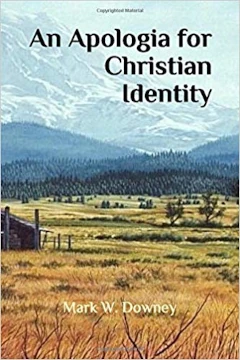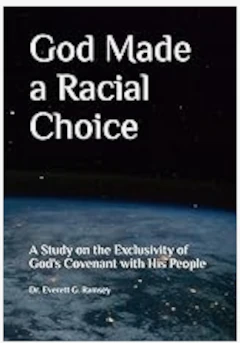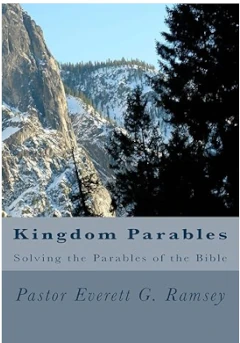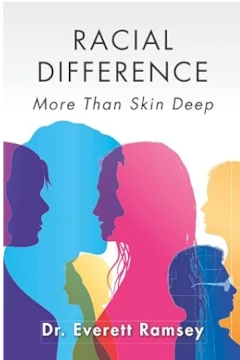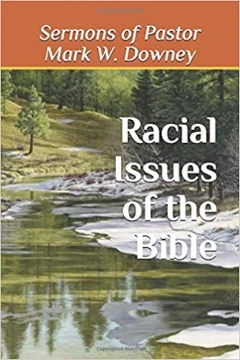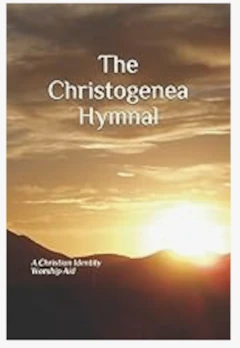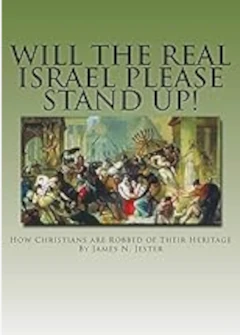R U Woke? Part 16
Esther
Sermon by Jim Jester
October 9, 2022
SCRIPTURE READING: Psalm 58:3
The wicked go astray from the womb, they err from their birth, speaking lies. (Ps. 58:3, RSV)
INTRODUCTION
The book of Esther is the last of the twelve historical books. The author’s name is not mentioned, and neither is the name of God, which has led many to believe it is a spurious book, not belonging within the canon of Scripture. The so-called feast of Purim (named after the city of Pur) has its origin in this book, not the Pentateuch. The hero and heroine of the book bear the names of the chief Babylonian god and goddess: Marduk (Mordecai) and Ishtar (Esther… or Easter). Another point that seems inconsistent, if the book of Esther is genuine, is that Esther, the niece of Mordecai, became the queen of King Ahasuerus because of her great beauty. Though we are not told, it may be assumed that Esther fulfilled the duties of a wife with the Persian King. If this is true, then the mating with a foreign king was gross sin (unless, of course, he was Adamic). No part of Esther was found in the Dead Sea Scrolls. Many scholars simply consider the book a novel; including Bill Finck, who has delved deeply into this subject:
The events of the Book of Esther are not found in any other historical source, they are not supported by any inscriptions, nor are they found in any of the later Biblical literature, which includes Nehemiah, Ezra, Haggai, Zechariah and Malachi, all of whom are from the Second Temple period. Both Nehemiah and Ezra had intimate dealings with the Persian kings, notably Cyrus and Artaxerxes, and neither makes any mention or allusion to anything from the Esther story. The prophet Daniel was also acquainted with the Persian king Cyrus. The Persian kings were held in high esteem by all of these prophets. There is nothing of Esther found in the four books of the Maccabees, the Wisdom of Sirach, or in any other late Biblical writing.
Out of all of the books of the Old Testament, the Book of Esther is the only one which is completely missing in the Dead Sea Scrolls. Some claim that this is by fortune that they simply did not survive. However, there have been extensive calendrical materials unearthed among those scrolls, and none of the calendars used by the Qumran sect mark the feast of Purim which the Book of Esther initiates. Therefore it is absolutely likely that the sect did not have Esther in their canon.
…Among the inconsistencies is the fact, recorded by both the prophet Daniel and by the Greek historian Herodotus, that the Kings of Persia were forbidden to change any laws or decrees which had been made before-time. Yet in the Esther story, even though the story itself also informs us of this Persian custom, the king is seen making such changes which are impossible because of the custom. Among the historically ridiculous situation … the king had issued a lengthy proclamation that all of the Jews throughout the empire would be put to death, on a specific date eleven months from the date that the proclamation was made. Yet there was no Exodus, and no uprising. …Historically, the Esther narrative does not fit into the rule of any of the kings of Persia, from the earliest of them all the way down to the last, for the entire 200-year span of the Persian empire.
…But beyond coincidence and more importantly, the spirit of Esther is absolutely contrary to that of Ezra and Nehemiah, who are supposedly from the same period of time. Both Ezra and Nehemiah soundly rejected the idea of converts to their religion, where the narrative in Esther rejoices over such converts. Neither did the Maccabees of the First Book of Maccabees make any converts. That book stops short right at the time of John Hyrcanus, who came to rule in Judaea from 134 BC, until 104 BC. It is during the rule of John Hyrcanus that the idea of converts to Judaism, both forced and voluntary, was put to practice. It is plausible, I think, that the idea was developing a little earlier and came into fruition during his time. But the earlier Maccabees were still destroying or running off, rather than converting the people of the cities that they conquered. The spirit of Esther is very agreeable to the time of John Hyrcanus and the late second century BC, where somehow that idea of converts to Judaism had become popular. (William Finck)
Every year the jews celebrate their Feast of Purim in anticipation of the day when they will fulfill their dream of world domination; as well as claiming “anti-semitism” and persecution. The events contained in the book (if actually true) took place during the Exile between 483-471 B.C., just before (13 years) the later returns under Ezra (458 B.C.) and Nehemiah (444 B.C.). So, while there are no racially significant portions in this book, a racial message is there anyway — we call it Jewish Supremacy.
Therefore, since there isn’t much to study in the book of Esther, we shall proceed on a topical basis, rather than a Scriptural expository.
VENGEANCE IS MINE: A PURIM SACRIFICE
[From a book by Emma Elmer]
Vendetta
The Jews see the destruction of their enemies as part of the deliverance of their god. They consider their actions as part of God’s divine plan for the destruction of the Amalekites. The deliverance of the Jews from all enemies became part of the plan for all ages. The Jews were to always be delivered from their enemies through their own actions. They did not wait for God to act. They took action unto themselves and asked God to bless it. It has been thus ever since. There is no turning the other cheek. There is no forgiving enemies or praying for those who despitefully used them. There is only death, and the death of their enemies meant God had blessed them.
Unfortunately, Christians believe the same thing. They too expect God to deliver the Jews from all modern enemies through overwhelming fire power. The death of innocents is just God’s blessing on the Jews. The Feast of Purim is from where this idea comes. God is expected to perform for “His” people regardless of repentance or righteousness. It is true the people fasted, but no where is it recorded that the fast led to a deeper knowledge of God and repentance from sin. That is because the Jew does not have any knowledge of personal sin. All sin is national. According to the Rabbis, Jews are “saved” by their own blood. This destruction of their enemies by the Jews is known as the law of vendetta. We can see this law enacted every day in modern Israel. That is what happens when Jews come into political and military power. All who oppose them are marked for destruction and God will bless it.
The law-of-vendetta is a blood feud. There is no ending it. It is the Jewish Hatfields and McCoys. The law is based on old Babylonian law. It has found its way into modern jurisprudence under the name lex talionis, or law of retaliation. The Bible calls it an “eye for an eye.” This means that the punishment should be equal to the offense. Of course, Jewish retaliation is always 10 times greater than the offense. That, too, was evident in the Book of Esther. Revenge is a trait so deeply ingrained into Jewish consciousness that it is almost genetic. A Jew never forgives and never forgets. They still avenge supposed wrongs to their tribe committed 1,000 or 2,000 years ago.
It must be remembered that in Esther’s Persia, no crimes had yet been committed against the Jews. The revenge they committed against the Persians was preemptive. Still, God was supposed to have blessed this. We know today that the Jewish Illuminati plan to exterminate the Christians in the Great Tribulation. Should Christians preemptively destroy all Jews now and praise God for it? Where is the logic in this? We know there will never be peace in the Middle East because the Jews and their cousins, the Arabs, are locked in a blood feud that goes back to the days before Esther. That is why Mordecai felt justified in his preemptive attack on the Persians. What was the result of the Jewish genocide against the Persians?
“And many from the peoples of the country declared themselves Jews, for the fear of the Jews had fallen upon them.” (Esther 8:17)
And so thousands converted to Judaism, as will happen again.
Amalekites
“David waged a sacred war of extermination against the Amalekites,” (Jewish Encyclopedia)
“Remember what Amalek did to you on the way as you came out of Egypt, how he attacked you on the way when you were faint and weary, and cut off your tail, those who were lagging behind you, and he did not fear God. Therefore when the Lord your God has given you rest from all your enemies around you, in the land that the Lord your God is giving you for an inheritance to possess, you shall blot out the memory of Amalek from under heaven; you shall not forget.” (Deuteronomy 25:17-19)
The Jews considered all Persians Amalekites, through Haman, although, of course, they were not. Jewish revenge is not specific. It just must be massive. It is because the Lord promised to blot out the name of Amalek from under heaven that whenever the name of Haman is mentioned when reading the book of Esther, a great noise is made to blot out the hearing of the name. Obviously Amalek is still with us. The name Amalekite has evolved to mean anyone the Jews hate. In this same manner Christians call any betrayer a “Judas.” The root of the name Judas is, of course, Judah, or Jew.
Who are the Amalekites today?
“The Amalekites were not Arabs, but of a stock related to the Edomites (consequently also to the Hebrews), can be concluded from the genealogy in Gen. 36:12, and I Chron. 1:36. Amalek is a son of Esau’s first-born son Eliphaz and of the concubine Timna, the daughter of Seir, the Horite, and sister of Lotan (Gen. 36:12); compare Timnah as name of an Edomite chief or clan. (verse 40, The Jewish Encyclopedia)
“This all took place at least a century before Christ. It is obvious, then that by the time Christ was born a great host of the people living in Judea were Canaanites and Edomites by race, although they were Judeans by religion and by citizenship.” (Sheldon Emery, Lord’s Covenant Church)
“It is obvious to all that the Jews hate Christ and Christianity. The facts above reveal the true origin of that hatred; namely, the Jews today are Edomites, and their allies from Eastern Europe are Gog and Magog! Thus, they are merely fulfilling Bible prophecy.” (ibid.) [End of book quotes]
MORDECAI
As mentioned earlier, there are a number of reasons why the book of Esther sheds doubt on its authenticity as Scripture. But the racial parts of the book may very well be truthful. As with other books of this time period, we have seen Israelites being referred to as “Jews.” So once again, we must identify what kind of jew is spoken of.
In the book of Esther, Mordecai is referred to as a “Jew.” “Now in Shushan the palace there was a certain Jew, whose name was Mordecai, the son of Jair, the son of Shimei, the son of Kish, a Benjamite.” (Est. 2:5) But in Ezra 2:2 he is listed among those who returned to Judah from the captivity. His Israelite heritage was from Benjamin.
This is more evidence that since the captivity, the Israelites began to be called jews. This is unfortunate and feeds error. Furthermore, it does not give anyone the right to refer to previous Israelites as jews, not even the half-breeds who later became the jews who killed Jesus Christ.
We should consider the possibility that in this book, the plot was not to kill the “Jews,” but rather to kill the Israelites.
Some say that Mordecai was the author of Esther.
LUTHER
Martin Luther also did not believe the book of Esther belonged in the canon of Scripture. Now, Luther may not have known all the issues with the book nearly as well as William Finck; but Luther’s main reason, which we covered in the last sermon (part 15), was the fact that Israelites were being called “Jews.” Luther clearly saw that there were two kinds of people called jews, but that was because he considered the word “Jew” another term for “Israelite” (and in a small degree he was correct). This same error of equating the two terms continues today. As we have noted before, we cannot identify jews with Israel because “Jew” represents only Judah, while Israel represents Ephraim/Manasseh (northern house), and eventually what remained of all thirteen tribes (all of Israel).
The jews as we know them today and as they were known to Luther have no part whatsoever in the Israelites of the Old Testament. Luther makes many statements in his writings that equates the jews of sixteenth century Germany with the Israelites of the Bible. And yet, in Martin Luther’s Works, he wrote at length of his hatred for the jews. This was much the same with Hitler’s struggle (in Mein Kampf ) as he observed the evil tendencies of jews, and how they affected (or infected) society. Yet, Luther was not comfortable with this position of equating all jews with Israel. He said,
“There are two kinds of Jews or Israel. The first are those whom Moses led out of Egypt into the land of Canaan… The others are the Kaiser’s (Caesar’s) Jews, not Moses’ Jews.” (Martin Luther, The Jews and Their Lies, p. 43)
Luther had his errors, but at least he saw two kinds of jews. Yet, we must wonder about his scholarship in saying jews were led out of Egypt, when the Bible refers to these people as Israelites. It was not until after the Babylonian captivity that the word “Jew” was used in the Bible.
In any case, we know that Luther had a great hatred for the jews as he wrote:
“And you, me, dear sirs and friends, who are pastors and preachers: I hereby wish to have dutifully reminded of your office, that you also warn your parishioners against their eternal ruin, as you well know how to do; namely, that they be on their guard against the Jews and avoid them…” (Ibid., p. 49)
“In my opinion it will have to come to this: if we are to stay clean of the Jews’ blaspheming and not become partakers of it, we must separate, and they must leave our country.” (Ibid., p. 60)
Knowingly or not, Luther discovered God’s law that we are to exclude foreigners from living among us. It took another 400 years for this lid to blow off in Germany, when the suffocating presence of the jews could not be tolerated any longer. And then, only to have the German effort blocked by the Allied powers, and the world made safe for jewish communism and their transition versions of socialism and democracy. World War Two was a jewish war of conquest over nations that only wanted their independence.
Let us examine some of Luther’s remarks:
- “They are the real liars and bloodhounds,” etc. The reference here is made to the “Jews” of Luther’s time; the same who plague and plunder us today.
- “They would like to deal with us heathen as they dealt with the heathen in Persia at the time of Esther.” No, Luther was wrong here. “They,” the jews of Luther’s time, were not the “Jews” (Israelites, as Mordecai) of Esther’s time. We cannot equate today’s jews with Israelites. Luther made this error, and it continues today.
- “They would like to deal with us heathen…” No, Luther was wrong again. We are not heathen, but the offspring of God. We cannot be compared to the heathen of Esther’s time, because they (jews, not of Judah) were truly heathens, not from the family of God.
- “O how they love that book of Esther.” Yes, this book fits the jews’ murderous desire to kill everyone that God has placed above them. Only in genocide can they hope to rule the earth, the goal of satanism/judaism.
- “They imagine to be the people of God.” True. Over the centuries they have attempted to usurp the rightful place of the true family of God.
- “And the foremost undertaking which they expect of their Messiah…” Actually, the jews have no Messiah (they are their own messiah). The Messiah (Christ) was sent to the Israelites. Did Christ ever try to convert a jew? No. He avoided them.
- “As they at first demonstrated against us Christians…” Yes, Luther was right! The jews first demonstrated against us Christians; i.e., Stephen, Peter, Paul, Silas and John, from the resurrection of Christ onward to this very day. There is no mistake in terms here, because the jews in Jesus’ day are the same jews in our day, opposing the true family of God.
It is only as we correctly understand the terms that we can hope to end the confusion and subterfuge carried down through the centuries. Is it any wonder that a few of us Christians who have discovered these truths refer to themselves as the Christian Identity movement?
THE TALMUD CONTRADICTS THE OLD TESTAMENT
The Universal Jewish Encyclopedia confirms that Judaism is based upon the teachings of the Pharisees and not upon the Law of Moses:
“The Jewish religion as it is today traces its descent, without a break, through all the centuries, from the Pharisees. Their leading ideas and methods found expression in a literature of enormous extent, of which a very great deal is still in existence. The Talmud is the largest and most important single member of that literature.” (Volume VIII, p. 474)
“This is not an uncommon impression and one finds it sometimes among Jews as well as Christians—that Judaism is the religion of the Hebrew Bible. It is, of course, a fallacious impression. Judaism is not the religion of the Bible.” (Rabbi Ben Zion Bokser, Judaism and the Christian Predicament, p. 59)
“…You will notice the great difference between the Jewish and Christian religions. But these are not all. We consider the two religions so different that one excludes the other… we emphasized that there is no such thing as a Judeo-Christian religion. There is not any similarity between the two concepts.” (Rabbi Moshe M. Maggal, President, National Jewish Information Service letter, 21 August 1961)
“Strictly speaking it is incorrect to call an ancient Israelite a ‘Jew’ or to call a contemporary Jew an Israelite or a Hebrew.” (“A Brief History of the Terms for Jew” in the 1980 Almanac.)
Titus 1:14-16 tells us, “Wherefore rebuke them sharply, that they may be sound in the faith, not giving heed to Jewish fables, and the commandments of men, that turn from the truth… They profess to know God, but in works they deny him, being abominable, and disobedient, and unto every good work reprobate.”
Given this consistent and irrefutable damning testimony within Scripture concerning the truth-less and deceitful nature of Judaism and the Jews, how is it possible that the rabbis have been able to deceive the world with their fables? The three main elements:
- Jewish deception
- Popular ignorance
- Judeo-Christian complicity
When will the judeo-Christian world wake up? Instead, they have succumbed to Wokeism.
Jesus said to the jews: You are of your father the devil, and your will is to do your father’s desires. He was a murderer from the beginning, and has nothing to do with the truth, because there is no truth in him. When he lies, he speaks according to his own nature, for he is a liar and the father of lies. (Jn. 8:44, RSV)
This concurs with our Scripture text, “The wicked go astray from the womb, they err from their birth, speaking lies.” (Ps. 58:3, RSV)
THE FACTUAL HISTORICAL RECORD
Jews want you to believe that Judaism somehow emerged out of the religion of true Judah and true Israel. It’s not true.
Ezra, Nehemiah, the Minor Prophets, the Apocrypha (especially I and II Maccabees) and Josephus, all describe how true Judah fought with all their might to remain separate from all the other nations (unlike America today). The Inter-testamental Period is important in understanding racial problems.
There were two kinds of Judeans in the days of John Hyrcanus and the first Herod: 1) The original, native Judahites, and 2) The recently naturalized Idumeans, who were allowed to become citizens of Judea, via a treaty signed by King John Hyrcanus with the nation of Idumea, circa 125 BC.
A series of talmudic changes in doctrine arose with the Pharisees, the false priests who were empowered by Herod (the “Great”). Herod was the Idumean usurper who, around 40 BC, murdered Hyrcanus II, the last true Judahite ruler to reign in Judea, and took his place. This background history is absolutely crucial to a proper understanding of why there was mutual hatred between the Messiah and most of the Pharisees. Jesus told these Pharisees that their ancestors were the murderers of many of the Judahite priests and prophets and that their whole race is guilty of these crimes.
Woe unto you, scribes and Pharisees, hypocrites! because ye build the tombs of the prophets, and garnish the sepulchers of the righteous, 30 And say, If we had been in the days of our fathers, we would not have been partakers with them in the blood of the prophets. 31 Wherefore ye be witnesses unto yourselves, that ye are the children of them which killed the prophets. (Matt. 23:29-31)
The Antiquities of the Judeans records that John Hyrcanus took by force all of the cities round about Jerusalem in this manner:
With the merging of the two nations of Judah and Idumea around 125 BC, these Idumean Edomites, having insinuated themselves into the throne of Judah by intrigue and force, began the process of dismantling the Hasmonean Dynasty, and thus, the Judahite power structure, by gradually replacing Judahites with Edomites.
These facts are contained in the historical works of Josephus, who was not a Jew. He was a Levite of Judea and thus, a Judahite, as his own writings attest. If we pay close attention to what Josephus wrote, we will discover that he makes a clear distinction between the Judahite people of Judea and the Edomites of Idumea. Whenever someone cites “Josephus, the Jewish historian,” rest assured that this slogan was invented to cement into our minds the false idea that Josephus was a jew rather than a Judahite. This false identification goes hand-in-hand with the false identification of Jesus as a jew. It is a matter of historical falsification (or identity theft).
CONCLUSION
The word “Jew” in Esther is H3064 yehûdı̂y (Jehudite or Judaite). The word “Judah” in the Old Testament is H3063 yehûdâh (Jehudah or Judah). Furthermore, the word “Jews” in most of Ezra have two variations: H3062 yehûdâ’ı̂y (Aramaic) and yehûdâ’ı̂y (Chaldee); then in Nehemiah it reverts back again to H3064 (what we started with), as in other books of this time period.
Can you see how this can be confusing? What are we to make of this? 1) That language and people change. 2) That Christian Identity is doing the Christian world a great favor in identifying the “Jew.” 3) That identity theology has also identified who the true people of God are in the world.
Whether this book, Esther, is true or not, it does confirm what we have seen in Ezra/Nehemiah. We must remember that this was a period of great change and instability with comparatively few Israelites in Judah. We know that by the time of Christ, the situation had deteriorated both in spirit and in flesh. Just imagine, if the Pilgrims of 1620 could come to 21st century America and see the same degradation in the church and state; they would have a very hard time coping. It ought to be evident that this book involves racial identity.

